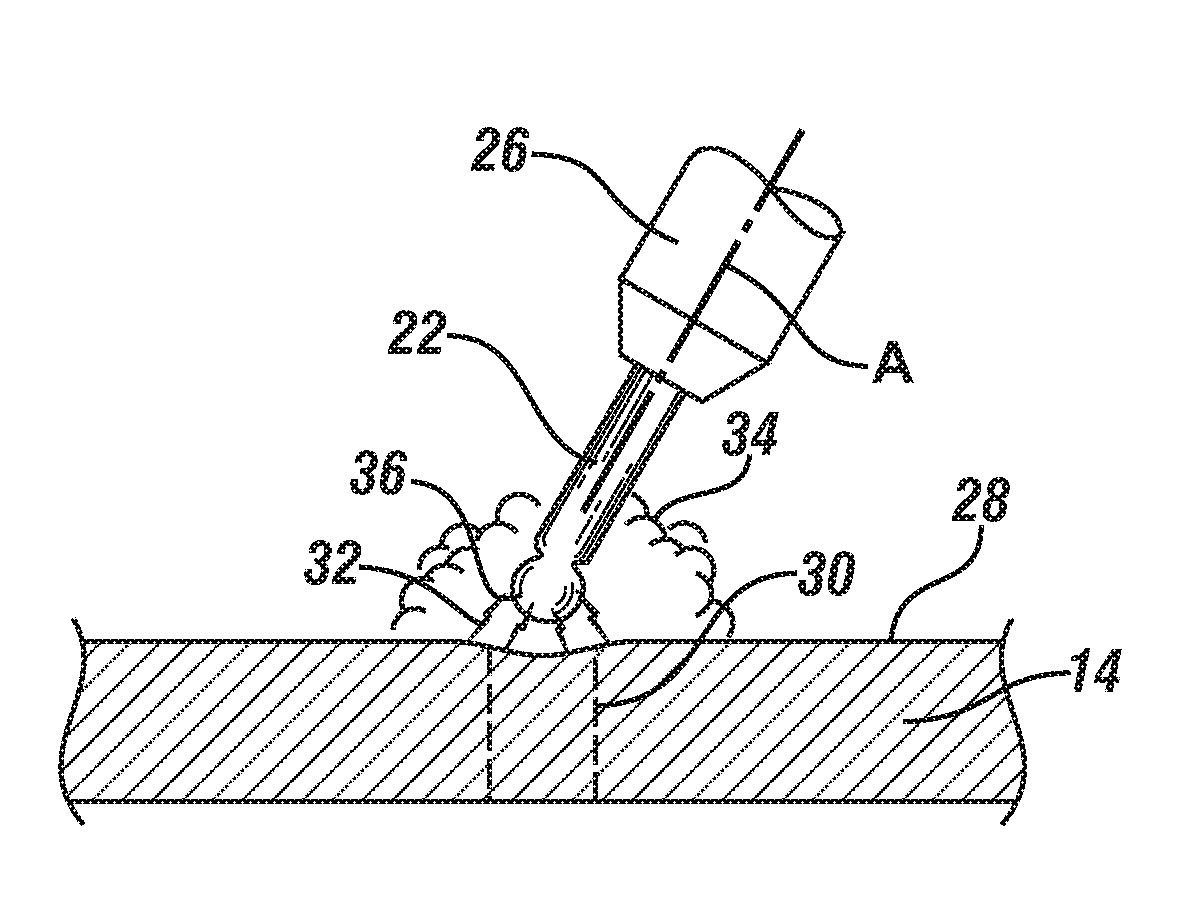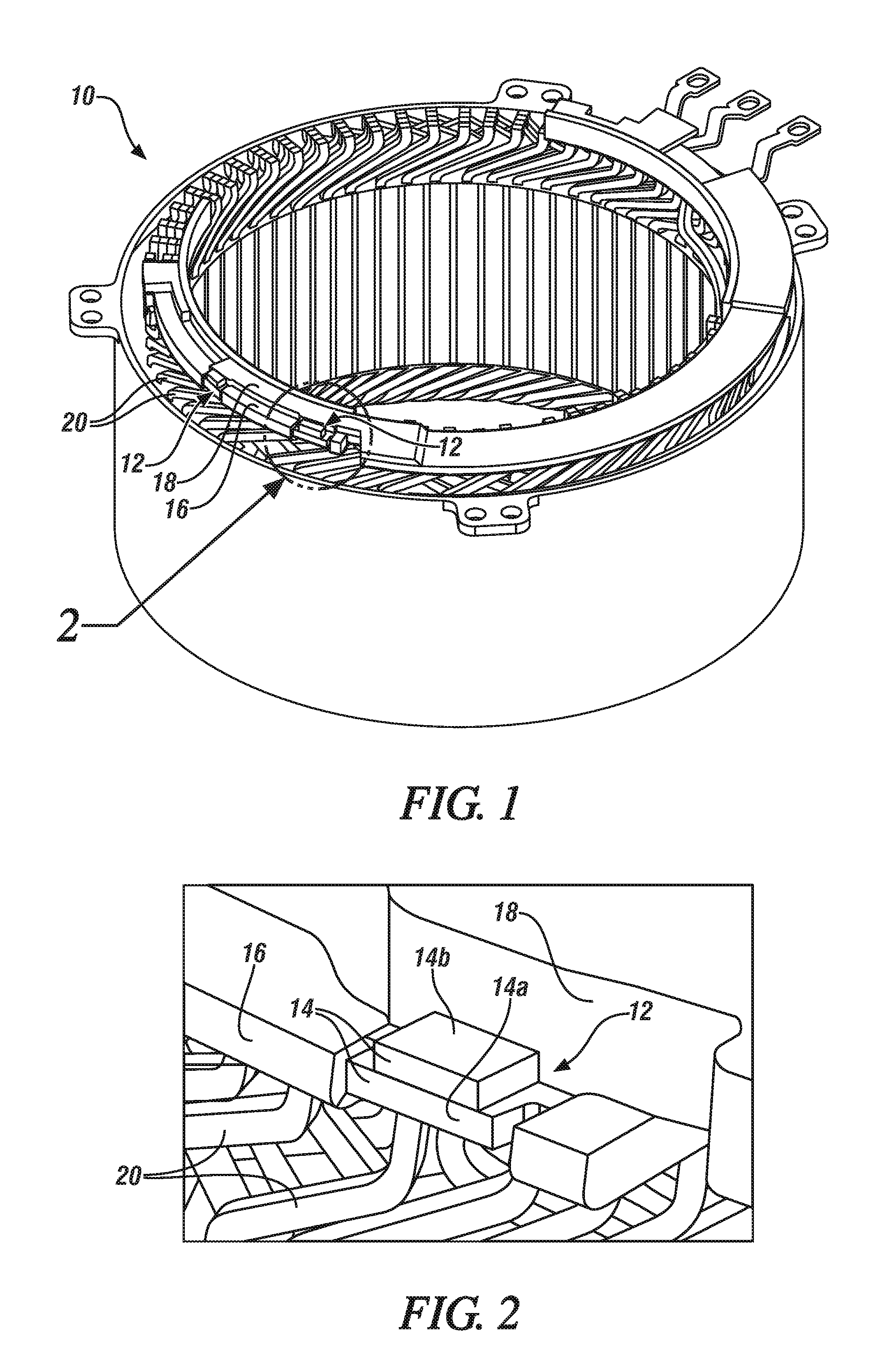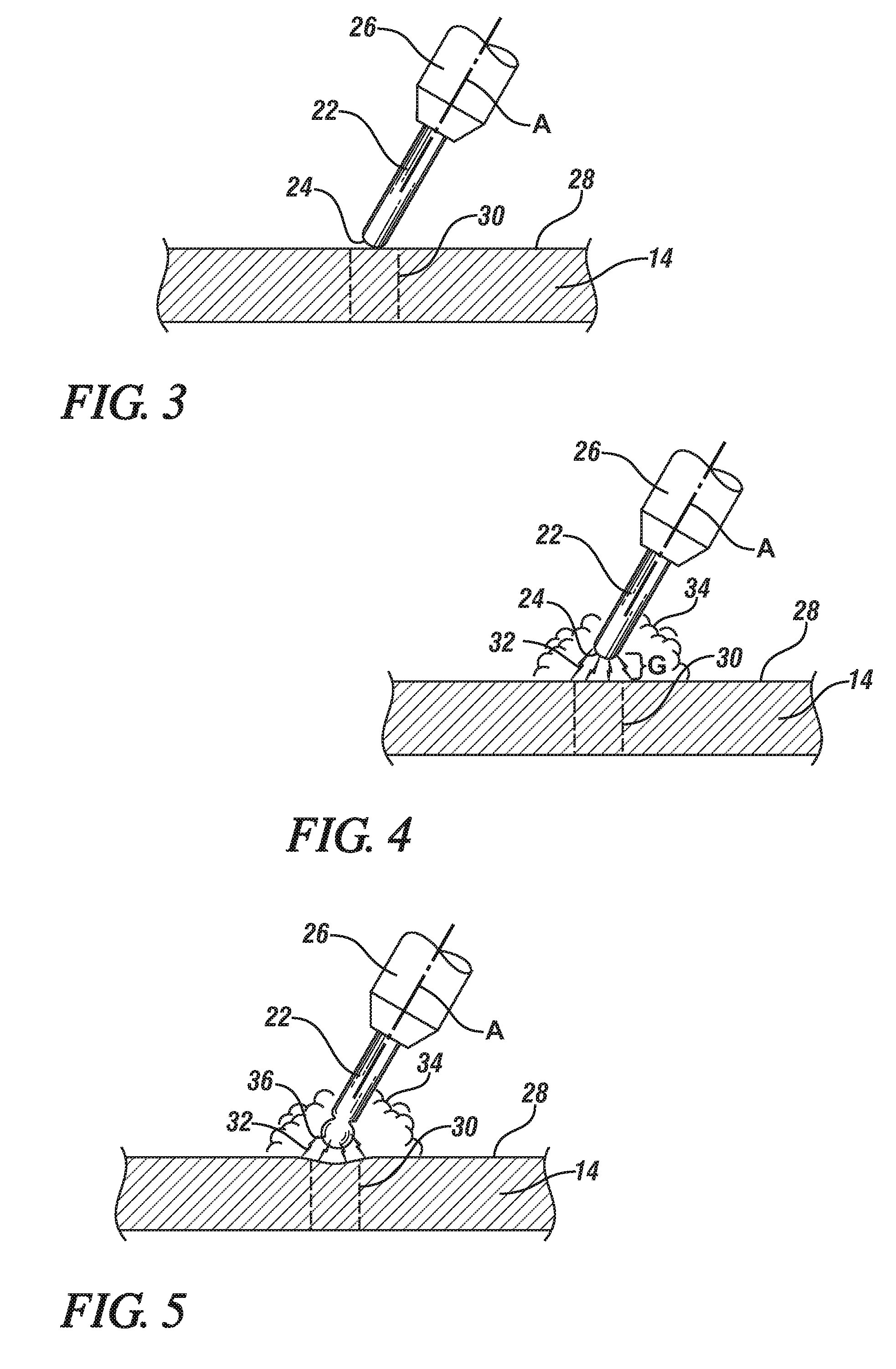Reaction material pre-placement for reaction metallurgical joining
a reaction material and reaction technology, applied in the direction of manufacturing tools, electrode vibration holders, solventing apparatus, etc., can solve the problems of manufacturing setting and practical challenges, and achieve the effect of high-quality metallurgical joints
- Summary
- Abstract
- Description
- Claims
- Application Information
AI Technical Summary
Benefits of technology
Problems solved by technology
Method used
Image
Examples
examples
[0039]A series of reaction material pre-placement experiments was conducted in accordance with the above description. Specifically, four pre-placement process variations were established, and a number of experiments were conducted in each variation. The reaction material electrode rod used in each experiment across all variations was a 1.0 mm diameter reaction material electrode rod composed of 78 wt. % Cu, 15 wt. % Ag, and 7 wt. % P. Copper coupon samples were also used in each experiment across all variations as representative metal workpiece substrates. The oscillating wire arc welding procedure used in each pre-placement experiment was generally the same in terms of protraction and retraction of the Cu—Ag—P electrode rods as is further described below. The differences that define the four process variations related to electrode rod polarity and the surface cleanliness of the copper coupon samples.
[0040]In each of the four variations, the reaction material electrode rod was broug...
PUM
| Property | Measurement | Unit |
|---|---|---|
| liquidus temperature | aaaaa | aaaaa |
| solidus temperature | aaaaa | aaaaa |
| liquidus temperature | aaaaa | aaaaa |
Abstract
Description
Claims
Application Information
 Login to View More
Login to View More - R&D
- Intellectual Property
- Life Sciences
- Materials
- Tech Scout
- Unparalleled Data Quality
- Higher Quality Content
- 60% Fewer Hallucinations
Browse by: Latest US Patents, China's latest patents, Technical Efficacy Thesaurus, Application Domain, Technology Topic, Popular Technical Reports.
© 2025 PatSnap. All rights reserved.Legal|Privacy policy|Modern Slavery Act Transparency Statement|Sitemap|About US| Contact US: help@patsnap.com



